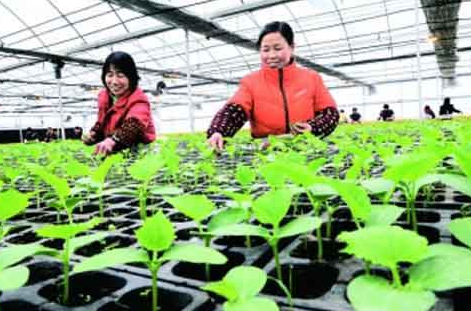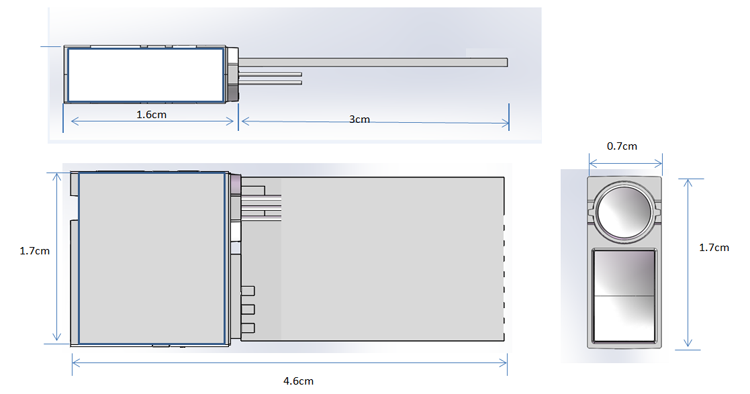1, anti-rotation. The minimum temperature for germination of fruit and vegetable seeds is 11 ° C ~ 12 ° C. Leafy vegetables range from 0 °C to 4 °C. Under normal circumstances, no seedlings appear after 7 days of sowing, indicating that the seeds have rotted. The precautionary measure is to choose a sunny and warm weather for sowing, using an electric hotbed or a hotbed to raise seedlings, thickening the covering, etc., to increase the temperature of the seedbed.
2, anti-burn, cold, roots. The ratio of organic fertilizer to bed soil on the seedbed is generally 1:1. The application of unfertilized organic fertilizer or excessive fertilization is prone to rooting. Watering can be done in the bowl to reduce the concentration of fertilizer and increase ventilation and drainage. The roots and roots are caused by low bed soil temperature and high humidity. The precautionary measures are to increase the temperature of the seedbed, reduce the amount of watering, cultivate the loose soil, and reduce the humidity by ventilation.
3, anti-flash seedlings. When the temperature in the shed is higher than 25 °C, if the air is ventilated from the bottom of the shed, sweeping the wind will hurt the seedlings. This phenomenon is a flash seedling. The preventive measures are to ventilate when the temperature in the shed reaches 20 °C. When the temperature in the shed is higher than 25 °C, it is necessary to ventilate the vents, that is, ventilate at the height of the shed, and avoid ventilating at the bottom of the shed.

4. Anti-corrosion. There are two reasons for the formation: first, the temperature of the seedbed is low, and the root system develops slowly to form a rigid seedling; secondly, in the late seedling stage, in order to suppress the growth of the seedlings, the method of watering or not watering is adopted.
5, anti-"wear cap". "Caps and caps" is the kind of belt that leaves the soil when it is unearthed, which affects the normal development and photosynthesis of the cotyledons. The reason is that the bed soil is too dry and the soil is too thin. The precautionary measure is that the bottom water of the seedbed should be poured, and the thickness of the cover soil should be appropriate. Generally, the small seed cover soil is l~1.5 cm, the medium seed is 1.5-2 cm, and the large seed is 3~4 cm. Before sowing until the emergence, the bed is covered with mulch to keep the soil moist.
6, the defense of the long. In addition to increasing ventilation, prolonging ventilation time, enhancing light intensity and low temperature exercise, it can also be sprayed with plant growth regulators (such as chlormequat) to inhibit the cold resistance of the seedlings. Sex and disease resistance.
IT02S, is JRT new product in the early 2019, which is a single-point LiDAR sensor, also called tof distance sensor. With a micro size of 46x17x7mm, customers can widely use in many Laser Measurement Solutions. The lidar distance sensor can measure 12m short-range with high frequency up to 100hz. It's great for Unmanned Aerial Systems. If you need us send you data sheet and spec for this products, offering sample as well, pls tell us, thank you.
Accuracy
+/-8cm@ 0.1~3.5m
Measuring Unit
cm
Measuring Range (without Reflection)
0.1-12m
Measuring Time
0.1~3 seconds
Measuring Frequency
100 Hz
Laser Class
Class II
Laser Type
650nm, <1mw, red
Weight
About 5g
Voltage
DC2.5V~+3.5V
Serial Level
TTL 3.3V
Size
46*17*7mm
Operating Temperature
0-40 ℃ (32-104 ℉ )
Storage Temperature
-25~60 ℃ (-13~140 ℉)
IT02S Mini Tof Sensor Module Diagram

Parameters of IT02S:
IT02S – the High performance-price ratio measurement solution
* low power consumption of single transmit and single receive
* small size: 46*17*7mm
* low cost
* proffessional techinical support
2D Laser Distance Sensor,2D Lidar Sensors,Tof Lidar Distance Sensor, Flight Distance Sensor
Chengdu JRT Meter Technology Co., Ltd , https://www.rangesensors.com